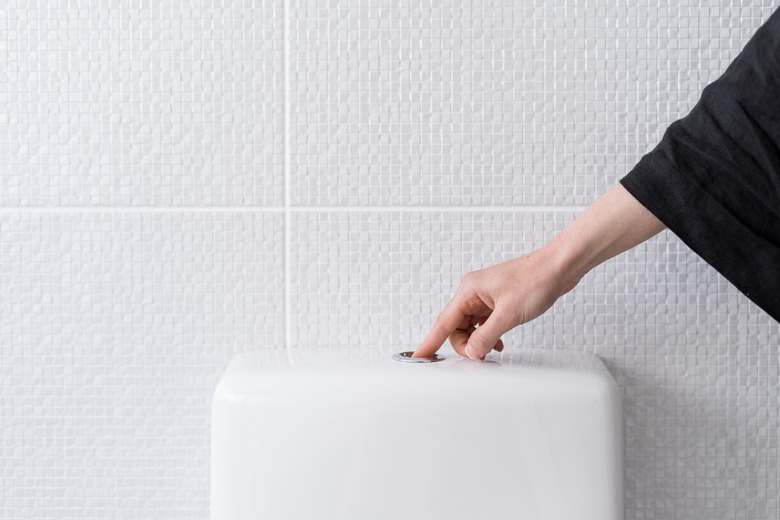How To Troubleshoot Toilet Flushing Issues
We may receive a commission on purchases made from links.
Push the flush handle or button on your toilet and the contents of the bowl swirl, gurgle and magically disappear to be replaced by fresh water from the tank. That's how things are supposed to happen, anyway. When they don't, it might be because something is blocking the waste line or the vent, or there may be a problem with some component in the tank. Some flushing issues can be traced to hard water deposits blocking the path of water from the tank to the bowl and some are due to the design of the toilet itself. Flushing problems are usually easy to resolve unless you have a first-generation low-flow toilet. If so, it probably never worked very well, and you should consider replacing it.
It's All About Water Flow
It's All About Water Flow
Toilet waste pipes suck, and that's a good thing. The negative pressure that empties the bowl is created by water flowing through the bowl to the waste pipe. For efficient flushing, there has to be enough water to fill the waste pipe completely, and it has to flow quickly. The tank might supply the proper amount of water, but if it flows slowly, the bowl level will simply rise and fall with each flush, but it won't empty. Similarly, the bowl won't empty if the water quantity is insufficient.
Flow begins at the siphon hole in the bottom of the tank. If this aperture is too small — perhaps because the flapper isn't rising all the way — the toilet won't flush. The water entering the bowl must pass through the inlet holes evenly spaced around the rim. If these are blocked, the toilet also won't flush. Finally, anything stuck in the waste line, such as a tampon or diaper, restricts flow and prevents a smooth flush. A blocked vent pipe can act as an obstruction because it prevents air — and water — from moving.
Check the Tank and the Bowl
Check the Tank and the Bowl
If your toilet bowl isn't emptying all the way, open the tank, press the flush handle and watch the flapper. It should rise to about a 60-degree angle and stay there until the water level has dropped below the siphon opening. If it rises only partway and closes prematurely, it's probably because the chain is too long. Shorten it by a link or two.
You might see the flapper rise all the way, but the water flows through the opening more slowly than it should. That's usually because the inlet holes in the bowl are blocked with scale. A paper clip or a short length of 14-gauge electrical wire make good tools for clearing the openings. Poke the wire into each hole, then flush again. You'll probably notice an improvement.
Take the Plunge...r
Take the Plunge...r
You should have a toilet plunger in your bathroom, and if your toilet doesn't flush well even though water seems to be moving through the tank and bowl, now is the time to use it. Make sure the bowl is full, then fill the plunger itself with water so you aren't plunging air, and have at it. It may help to cover nearby sink, tub and shower drains with tape to maximize the pressure you develop in the toilet waste line. If the problem persists after a few good plunges, you may need to resort to a toilet auger to clear the obstruction. An enzyme-based drain cleaner that won't damage pipes or your septic system might also help.
Clear the Vent
Clear the Vent
When your toilet regularly smells like sewage, the water level is too low and you see bubbles in the water when the toilet isn't in use, you probably have a vent blockage. The bubbles are caused by air escaping through the toilet trap when it can't find any other way out of the drain pipes, and the smell and low water level are due to water being sucked out of the toilet P-trap when other drains are used.
Vent blockages are common in winter when the vent stack freezes over, but they can also happen in summer when leaves, debris or even a small animal get lodged inside. Clear a frozen vent by going into the attic and heating the vent pipe with a hair dryer. To get leaves and other obstructions out of the vent in summer, spray water into the vent opening with a garden hose. The water should force the obstruction down the stack and into the sewer. In severe cases, when all that happens when you spray water is the vent stack overflows, you may need to hire a plumber to clear your vents with a sewer auger.
